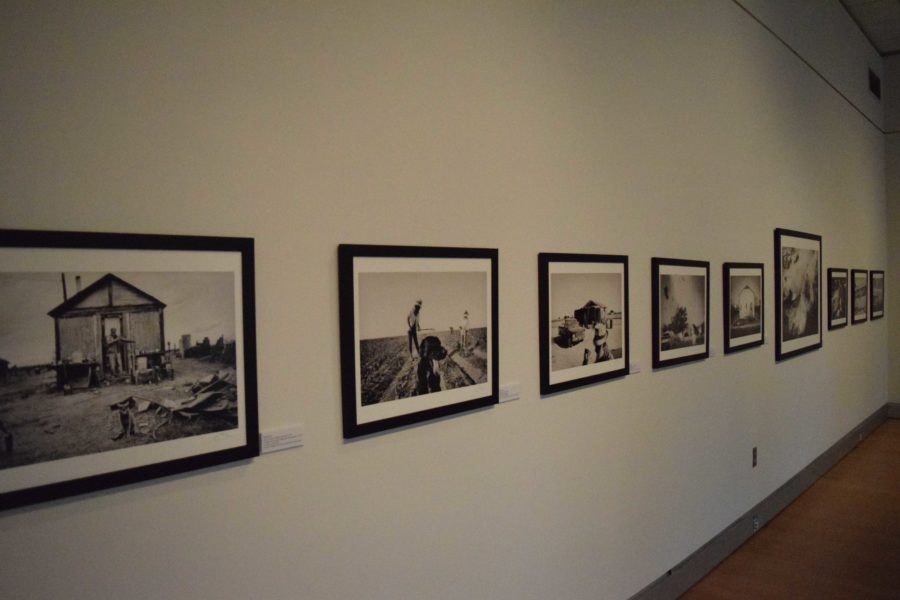Stark. Dramatic. Startling. The struggles that plague migrant workers today and throughout history are captured on film in “Framing Migrant Labor,” an exhibit in the Robert F. Agrella art gallery.
Upon entering the gallery, observers are confronted by the harsh reality agricultural workers face every day, displayed in black and white.
Photos line the walls depicting the lives of laborers against a white and gray background, matching the aesthetic of the images. The audio from documentaries highlighting migrant labor echoes from the back of the gallery.
In a riveting display the gallery exhibit showcases a significant issue faced with quiet dignity by many.
The exhibit features photographer Matt Black’s works. The New Yorker, Mother Jones and Vice magazines have featured Black’s photos and he won Time magazine’s Instagram photographer of the year in 2014. He also produced multimedia pieces for msnbc.com, The New Yorker and Orion Magazine.
Museum Curator Renata Breth said, “I saw Black’s photos in the New Yorker and his images are so powerful, direct and compelling that I really wanted his work to be seen by our students and community.”
Accompanying Black’s photographs are works by local photographers Morrie Camhi, Otto Hagel, Ernest Lowe and Hansel Mieth showing migrant laborers from the ’30s through the ’70s.
“I wanted to show students that the topic is not new, though Black has a contemporary vision,” Breth said.
Along with the stills, Ernest Lowe’s work is shown in a narrated slideshow, showcasing his past images of farm workers and recent photos when Lowe revisited some of the subjects. In the slideshow, viewers learn that none of Lowe’s subjects still work as agricultural laborers.
There are a number of documentary shorts playing in the back of the gallery highlighting the issues these workers face, as well as some of the problems arising in relation to the drought.
“The topic is of extreme importance. A lot of our food grows in the central valley and migrant labor is a relevant topic,” Breth said.
One of the goals of the exhibit is to spark change in the business of agriculture. “We have a lot of agriculture in our county as well and one small improvement is HEP, where workers can get a high school education through our college,” Breth said.
Another goal is to bring awareness that the problems faced in the past are still being seen today. “In the gallery students from different disciplines other than art come to discuss the issues, if not the images themselves,” Breth said.
The gallery is open 10 a.m. to 4 p.m. Monday-Thursday and 1-4 p.m. on Saturday and Sundays. It will be showing the exhibit “Framing Migrant Labor” through Dec. 10 in the Doyle Library.



